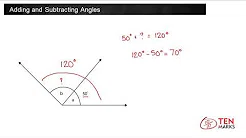Use the four operations to solve word problems involving distances, intervals of time, liquid volumes, masses of objects, and money, including problems involving simple fractions or decimals, and problems that require expressing measurements given in a larger unit in terms of a smaller unit. Represent measurement quantities using diagrams such as number line diagrams that feature a measurement scale.
The apps, sample questions, videos and worksheets listed below will help you learn Measurement Problems.
Coherence Map of 4.MD.A.2
The Coherence Map shows the relationships among the Common Core Standards. The Lumos coherence map not only provides graphical representation and convenient navigation within the standards map but also access to thousands of engaging learning & lesson plan resources such as Practice questions, Videos, Books and Infographics related to every standard. It helps educators and students visually explore the learning standards. It's an effective tool to helps students progress through the learning standards. Teachers can use this tool to develop their own pacing charts and lesson plans.
Standard Description of 4.MD.A.2
Use the four operations to solve word problems involving distances, intervals of time, liquid volumes, masses of objects, and money, including problems involving simple fractions or decimals, and problems that require expressing measurements given in a larger unit in terms of a smaller unit. Represent measurement quantities using diagrams such as number line diagrams that feature a measurement scale.





